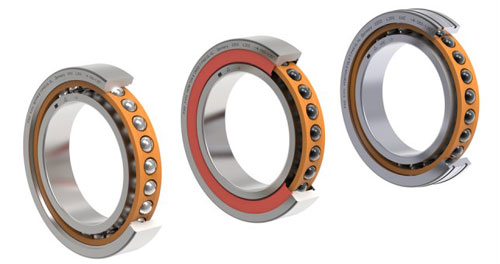Lubrication for Lathe Spindle Bearings
In this article, we'll discuss the lubrication and oil mist delivery systems for preferred configuration for spindle and lathe spindle bearings. It's important to understand how spindle bearings work and why they're important for your machines' precision. After reading this article, you'll know what to look for and which options to choose for your lathe.
preferred configuration for lathe spindle bearings
There are two common configurations for lathe spindle bearings. One is a back-to-back arrangement with two angular contact ball bearings on the left side and one on the right. The other is a back-to-back configuration with a combination of radial and thrust bearings. Regardless of the configuration, it is imperative that the correct bearings are used for the application.
A spindle bearing program can help choose the most appropriate type of bearing for the application. The inputs include the machine type, spindle unit type, drive type, power, operating life, workpiece or cutter information, and axial and radial stiffness at the spindle's nose. The output will give you a range of possible spindle bearing arrangements, based on the information you have provided.

preferred lubrication system
When selecting a lubrication system for lathe spindel bearings, recommends oil mist lubrication. When replacing bearings that are oil lubricated, it is important to remove the old grease and clean the jets. This method requires periodic replacement of the lubrication lines and O-rings. Jets are small orifices that should be cleaned regularly to avoid contaminating the lubrication system and premature failure.
Grease is often a preferred lubricant for spindle bearings, as it has very low hydrodynamic frictional losses, resulting in improved machining performance. Grease, on the other hand, is a cheaper alternative to oil and reduces operating temperatures. Oil lubrication can also be useful for high-speed applications. In addition to grease, oil lubrication can also provide cooling.
preferred oil mist delivery system
Many lathe spindle bearings are grease-packed and can last a long time if properly maintained. The grease injected spindles use grease cartridges and are pneumatically controlled by the machine PLC. These spindles have holes in the inner races that allow a small amount of grease to be injected into the bearing. This method is ideal because it allows the user to switch out existing grease for a different type when required.
The oil mist delivery system consists of an air filter/regulator, an oil pump, and injector block. Most manufacturers have a panel installed with the system. The regulator is positioned on the ventury and controls the amount of oil misted into the bearings. The oil is then atomized and carried to the spindle through the bearings, with some mist dripping onto the lathe spindle and the rest released to the atmosphere. The oil mist delivery system is designed to have an average rate of twenty drops per minute (dpm) and can vary from five to 80 dpm.
preferred configuration for super precision and spindle bearings
offers a wide range of super precision and spindle bearings, primarily for machine tool spindles and applications requiring high running accuracy and speeds. These bearings incorporate unique features and configurations that maximize their performance and minimize noise, vibration and heat generation. Read on to discover the benefits of super precision and spindle bearings from . This article will outline the advantages of super precision and spindle bearings from and what makes them ideal for this application.
super precision and spindle bearings feature double-row cylindrical rollers that deliver a balance between load carrying capacity and rigidity. They are suitable for operation in temperature ranges ranging from -30 degrees Celsius to 110 degrees centigrade. A tapered bore allows for more accurate adjustment of preload and clearance. NN 30 series bearings feature a special combination of load carrying capacity and rigidity. They are suitable for shaft diameters ranging from 25 to 130 mm.
- Previous: crossed tapered roller bearings
- Next: lathe spindle bearings purchase











